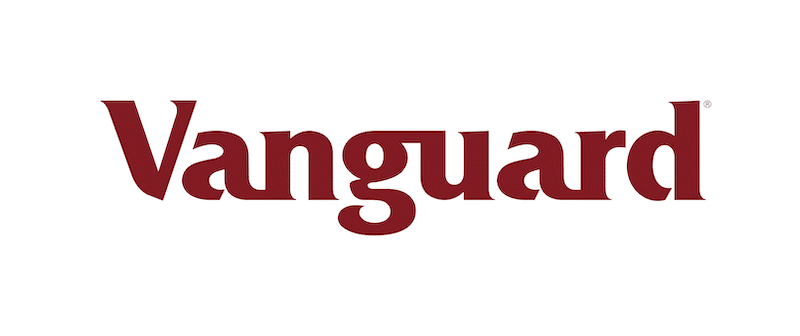
M1 Finance is a financial services company that offers a self-directed investing platform with brokerage accounts, cash management accounts, and lines of credit.
The single most popular trend in investing today is passive investing. Most people associate passive investing with low cost, broad based index funds like those you can purchase at Vanguard. But can you be a passive investor with a more complex strategy? M1 Finance thinks you can.
Their innovative investing platform brings together the best of “behavioral alpha” and low cost brokerages to help users invest with confidence. If your investment strategy includes individual or fractional shares and low cost ETFs, you’ll be hard pressed to find a better investment tool than M1 Finance.
In fact, we've had M1 Finance "Honorable Mentions" on our list of the best brokers to invest at this year. They're also consistently mentioned by our readers as one of the best places to invest. Here's our review.
M1 Finance Details | |
|---|---|
Product Name | M1 Finance |
Min Investment | $100 |
Monthly Fee | $3 (can be waived if you meet monthly program requirements) |
Account Type | Taxable, IRA, Custodial, Trust, More |
Promotions | None |
Who Is M1 Finance?
M1 Finance is a brokerage firm that was founded in 2015 by Brian Barnes. In his book Nudge, economist Richard Thaler, “people have a strong tendency to go along with the status quo or default option.”
Humans need a good default option, or we’ll make bad decisions. This is especially true in investing. It’s easy to have great investing intentions, but fail to follow through on them.
M1 Finance addresses this concern. Their low cost investing platform allows you to set up your ideal portfolio, and automate contributions to the portfolio. Once your default is set, you don’t have to think about it again.
Today, they have over 1 million users and have over $8 billion in assets on their platform.
What Does It Offer?
M1 Finance sets itself apart by letting you create your own custom investment allocation and then automatically invest and rebalance into it.
They also offer a variety of services, including a great savings rate on their cash account.
Plus, you can borrow against your investments with an M1 Margin Loan. Combined - all of these low cost services make M1 a compelling choice to invest.
Low Price Includes Fractional Shares
What are fractional shares? Imagine that Amazon stock $AMZN is $800, but you only want to own $200 worth of stock. Traditionally, you could buy no less than 1 full share of stock. Fractional shares allow you to own just $200 worth of $AMZN or 0.25 shares. Low cost brokerages have allowed investors to employ fractional shares for years. But M1 Finance is among the first self-directed automated investment platforms that allows you to invest in fractional shares.
This means that investors can invest in particular stocks in part of their portfolio and in index fund ETFs in the other part. It should be noted, though, that M1 Finance doesn't currently support mutual fund investments.
Dynamic Rebalancing
M1 Finance does more than automate investing. It automates efficient rebalancing. Rebalancing involves buying the asset class that is underweight and selling that class that is overweight. “Buy low, sell high” is a shorthand way of saying rebalance your portfolio.
M1 Finance does that for you automatically. First, you set your total portfolio structure, which M1 Finance calls "Pie" because the slices of your allocation look like pie slices allocated per the percentage set. Then every time you add money to your portfolio and if you have auto-invest turned on, M1 Finance automatically buys the most underweight asset.
Every time you sell, they automatically sell the most overweight asset (note: depending on how much is being sold underweight or balances slices could sell too to ensure the final allocation is correct).
M1 High-Yield Cash Accounts
M1 recently launched the M1 High-Yield Cash Account, which currently offers a whopping 5.00% APY. The account has no minimum balance requirement.
If you're already using M1 for other features - like Borrow - it could make sense. Otherwise, you might be better off in a traditional high-yield savings account that doesn't have a monthly fee involved.
Smart Transfers
Smart Transfers allows you to make transfers within your M1 account. For example, you can seup transfers from your Invest to Spend account, or from your Spend to Invest account, based on rules you setup. Another popular option is to use the Borrow account to automatically transfer to Spend.
While you can always make one-time transfers, Smart Transfers allow you to setup rules. This has great potential as it allows you to deploy your cash based on rules you set.
For example, if you're trying to build or replenish an emergency fund, you can setup your Invest account to transfer all of your cash from things like dividends back into your Spend account.
Or, if you're worried you have too much idle cash in your Spend account, set a maximum cash balance for your Spend account and automatically transfer the excess into an Invest account.
M1 Margin Loan
M1 Finance has a unique feature called M1 Borrow. Using M1, people can invest in exactly what they want. But doing so automatically opens up a portfolio line of credit at one of the lowest interest rates on the market. It is significantly easier to access, more flexible on terms, and lower cost than any other method of borrowing money that we've seen, whether it’s a mortgage, HELOC, auto loan, or personal loan.
This type of borrowing has historically only been available to the ultra-wealthy, who use it extensively due to the flexibility and low rates. M1 Borrow makes this even easier and less expensive, and opens it up to a much larger audience.
To qualify, users must have a taxable M1 brokerage account with an account balance of $2,000 or more. IRAs do not qualify. Your credit score isn't impacted** and M1 Finance doesn't do a credit check since it uses your portfolio as collateral.
You can borrow up to 50% of your account's equity balance out as a loan. The interest rate for standard accounts is 7.25% which is low when compared to the margin rates of other brokers.
The really interesting thing is there is no set payment schedule. You can pay this back as you see fit, simply realizing interest every month on your outstanding balance.
There are three main risks with using M1 Borrow: interest rates rise, the portfolio value declines and forces a maintenance call, or losses are magnified due to leverage. Make sure you're aware of these risks if you take advantage of this feature.
Custodial Accounts
M1 Finance clients get access to custodial accounts - where you can setup an account for your children to invest for the future. This account is a UGMA or UTMA account that you hold and make contributions to on behalf of a child (until they reach the age of majority in your state).
You (the custodian) can manage the account, but the child is the beneficiary of the account and the owner of the assets in the account. Each deposit is considered an irrevocable gift, and there is no maximum amount that can be contributed.
It's important to remember that this type of account can have implications for financial aid. If you're considering using this account to save for college, we recommend you use a 529 plan instead.
M1 Crypto
Yes, it's true! M1 launched crypto and you can start researching crypto and building crypto Pies. What's great is that you can create a balanced crypto portfolio in the same way you would with other assets.
The company says it's just one part of an ongoing process to offer new asset classes, products, and ways to invest.
The advantages of adding crypto are plenty, as you can:
Owner's Rewards Card by M1
M1 Finance launched the Owner's Rewards Card and it is an awesome rewards card that can deposit cash back into your M1 Finance account.
The card offers a flat, *1.5% cash back and 2.5%, 5%, and even 10% cash back at certain popular brands.

Unlike other rewards cards, the cash back that you earn with the Owner's Rewards Card can be automatically reinvested into your M1 Invest portfolio (note: Owner’s Rewards cannot be paid out to an M1 Traditional IRA, Roth IRA, SEP IRA, Trust Account or Custodial Account).
And this card has no annual fee.
Bonus Offers
M1 Finance is currently doesn't have any bonus or promotional offers.
Plaid Connectivity
M1 announced an expanded integration with Plaid. Plaid is a fintech platform that allows financial apps to communicate with one another. In fact, Plaid connects more than 8,000 fintech apps and financial institutions.
One of the knocks against M1 in the past has been the lack of connectivity to other fintech platforms, such as Empower, YNAB, or Copilot. With this enhancement, you'll now be able to integrate your M1 account with many other financial apps, including payment systems, budgeting apps, etc. You will also be able to connect your bank to your M1 account.
For security purposes, your login credentials will remain with M1, even if Plaid is being used to integrate your data with a third-party.
Are There Any Fees?
There are no commissions to when placing trades with M1. There is, however, a $3 monthly fee, for all users who don't meet M1 Finance's monthly program requirements. The fee is waived if any of the following apply:
- Your M1 Invest or Earn account balance equals or exceeds $10,000 for at least one day during the billing cycle.
- You have an active M1 Personal Loan.
- One of the account holders of a Joint Cash Account has an active M1 Personal Loan or their M1 Invest or Earn accounts have a balance of $10,000 or more for at least one day during the billing cycle.
- You have an Owner's Rewards Card and no other M1 accounts.
Not that M1 Finance used to be free for all users who weren't signed up with M1 Plus. However, M1 Plus has been discontinued, as of May 15, 2024, and the new monthly pricing model applies to all users. Fortunately, all clients now benefit from the same features that M1 Plus users previously enjoyed. This includes enhanced cash back rewards, more in-depth investing tools, and preferred Margin Loan rates.
There are also a few miscellaneous accounts that you'll want to be aware of. For example, you'll be charged a $50 inactivity fee if you don't log into your account for 90 days and $25 for wire transfers. Trades will also incur SEC and TAF regulatory fees that are generally only a few cents. See M1's full fee schedule here.
How Does M1 Finance Compare?
M1 Finance is one of our top picks for places to invest because it offers great tools and features. It's an honorable mention in our Best Places To Invest list.
Check out this quick comparison here:
Header |  |  | |
|---|---|---|---|
Rating | |||
Commissions | $0 | $0 | $0 |
Min Investment | $100 | $0 | $0 |
Banking? | |||
Cell |
How Do I Open An Account?
You visit the M1 Finance website to start your application.
You should receive an email within a day to let you know if your account's been approved. However, in some cases, M1 may ask you to submit identity verification documents. The following types of accounts can be opened with M1:
- Individual accounts
- Joint accounts
- IRAs (Traditional, Roth, SEP)
- Cash Account
- Trust accounts
- Custodial accounts
M1 Finance will allow users to open multiple accounts under the same login. Currently, the limit per individual login is five accounts.
Is It Safe And Secure?
Yes, M1 Finance uses military-grade 4096-bit encryption on its sites and offers two-factor authentication (2FA) for account logins. Investment accounts are protected by SIPC insurance up to $500,000 and cash accounts are FDIC-insured up to $250,000.
The company also gets high marks for its app. It currently has 4.7 stars on AppStore and 4.5 stars on Google Play.
How Do I Contact M1 Finance?
You can contact M1's support team by chatting on their website or in the app. It also provides a robust set of articles and tips inside its Help Center.
To contact M1 by phone, you'll want to call 312-600-2883.
Or if you prefer to reach out via email, you can do so at help@m1.com.
Why Should You Trust Us?
I have been writing about and reviewing investment firms and brokerages since 2009, and have reviewed almost every US-based investment firm open to individual investors. I have seen this space evolve from high cost to low cost options, and have seen the amount of investment tools grow for individuals. Plus, we've tested and tried M1 Finance's banking and brokerage platforms.
Furthermore, we have been polling our audience for years to find out which investment firms they trust and use, and that's how we put together our annual rankings of the best investment companies.
Finally, we have our compliance team that regularly checks and updates the facts on our reviews.
Who Is This For And Is It Worth It?
As with all investing platforms, M1 Finance isn’t for everyone. If you're looking for robo-advisor portfolios instead of a self-directed investing platform, you might want to consider Charles Schwab's Intelligent Portfolios and SoFi Invest.
Anyone who subscribes to a “technical analysis” investing philosophy should avoid M1 Finance too. You’ll spend too much time manipulating your portfolio. Instead, you'll want to choose a trader-focused broker like Thinkorswim or Ally Invest.
M1 Finance offers real value to investors:
- Recurring Transfers
- Completely Automated Portfolio Management (completely customizable)
- Fractional Shares
- One Touch Rebalances
- Low Margin Rates
One thing that you should note. All of M1 Finance’s portfolio dashboards consider your M1 Finance portfolio. If you’ve got significant assets in your work 401k or an outside account, you’ll need an overall portfolio balancing strategy. Consider Empower to get total portfolio statistics.
Honestly, M1 is a great choice, and as they continue to add more features and support, we're excited by what they are doing. Check out M1 here.
M1 Finance FAQs
Here are a few of the most common questions we hear about M1 Finance:
Can I buy individual stocks on M1 Finance?
Yes, M1 Finance does allow clients to invest in individual stocks and ETFs and even allows fractional share investing in both.
Can you use M1 Finance on a computer?
Yes, M1 Finance offers web and desktop account access in addition to its mobile apps which are available on iOS and Android.
Can foreigners use M1 Finance?
No, currently only U.S. citizens or permanent residents are eligible to open accounts with M1 Finance.
Does M1 Finance offer any bonuses or incentives for new clients?
Yes, new clients who transfer their accounts from another investment platform can earn a bonus of up to $500. See terms and conditions.
M1 Finance Features
Account Types |
|
Minimum Investment | $100 for brokerage, $500 for IRA, and $5,000 for trust |
Monthly Fees | $3 (waivable if you meet M1's monthly program requirements) |
Stock Trades | $0 |
ETF Trades | $0 |
Mutual Fund Trades | N/A |
ETF Expense Ratios | 0.06% to 0.20% |
Fractional Share Investing | Yes |
Margin Rates | 7.25% |
Socially Responsible Investments | Yes |
Access to Human Advisor | No |
Automatic Rebalancing | Yes |
Tax-Loss Harvesting | No (but there is a tax "minimization" feature) |
Customer Service Number | 312-600-2883 |
Customer Service Email | help@m1.com |
Other Customer Support Options | Chat Support tickets |
Web/Desktop Account Access | Yes |
Mobile App Availability | iOS and Android |
Promotions | None |
The opinions expressed are solely those of the authors and do not reflect the views of M1. They are for informational purposes only and are not a recommendation of an investment strategy or to buy or sell any security in any account. They are also not research reports and are not intended to serve as the basis for any investment decision. Prior to making any investment decision, you are encouraged to consult your personal investment, legal, and tax advisors.
†Your free trial (a $9 value) begins the date you enroll in the M1 Plus subscription, and ends 3 month after (“Free Trial”). Upon expiry of the Free Trial, your account is automatically billed a monthly subscription fee of $3 unless you elect annual billing of $36 or cancel your subscription under your Membership details in the M1 Platform. We’ll remind you when your renewal date is approaching.
*1.5% - 10% Owner’s Rewards cash back earned on eligible purchases subject to a maximum of $200cash back per calendar month. Cash back rates of2.5% - 10% require an active M1 Plus subscription(billed at $125 annually).
Credit Card not available for US Territory Residents.The Owner’s Rewards Card by M1 is Powered byDeserve and issued by Celtic Bank, a Utah- CharteredIndustrial Bank, Member FDIC. Review CardholderAgreement and Rewards Terms for important information about the Owner’s Rewards Card by M1.
For informational purposes only and not a trade recommendation. All product and company names are trademarks or registered trademarks of their respective holders. Use of them does not imply any affiliation with or endorsement by them.
*Rates are not guaranteed and are subject to change.Not all applicants qualify for the lowest available rate and rates are subject to credit history, income, term of loan, and other factors.
M1 is not a bank. M1 Personal Loans are furnished byB2 Bank NA, Member FDIC and Equal OpportunityLender, and serviced by M1 Spend LLC, a wholly owned operating subsidiary of M1 Holdings, Inc.
**To see which personal loan rates and terms you qualify for, M1 conducts a soft credit check that will not affect your credit score. However, if you choose to proceed and continue your application,M1 will request a hard credit check from one or more consumer reporting agencies, which may affect your credit score.
Obtaining stated APY (annual percentage yield)or opening a savings account does not require a minimum account balance. Stated APY is valid from date of account opening. Account fees may reduce earnings. Higher APY rate subject to paid M1 Plus subscription. Rates are subject to change.
M1 is not a bank. M1 Spend is a wholly-owned operating subsidiary of M1 Holdings Inc.. M1 SavingsAccounts are furnished by B2 Bank, NA, MemberFDIC.
Commission-free trading of stocks and ETFs refers to $0 commissions charged by M1 Finance LLC for self directed brokerage accounts. Other fees may apply such as regulatory, M1 Plus membership, account closures and ADR fees. For complete list of fees, visitM1 Fee Schedule.
ªIf you choose to transfer your account to another broker-dealer, only the full shares are guaranteed to transfer. Fractional shares may need to be liquidated and transferred as cash.
All investing involves risk, including the risk of losing the money you invest. Past performance does not guarantee future performance. Using margin loans can add to these risks and you should review the M1 margin account risk disclosure before borrowing. M1 Margin Loans are available on margin accounts with at least $2,000 invested per account. Not available for Retirement or Custodial accounts. Margin rates may vary.Brokerage products and services are offered by M1Finance LLC, Member FINRA / SIPC, and a wholly owned subsidiary of M1 Holdings, Inc.
Investing in cryptocurrency comes with significant risk and may not be suitable for everyone.Based on your specific situation and financial condition, carefully consider whether investing in cryptocurrencies is suitable for you. For relevant disclosures and risks, visit m1.com/crypto-disclosuresAs a customer of both M1 and Apex, you have a brokerage account held at Apex Clearing Corporation to hold your securities and cash and an account at Apex Crypto to hold your cryptocurrencies.M1 Digital LLC is a wholly separate affiliate of M1 Finance LLC, and neither are involved with the execution or custody of cryptocurrencies.Cryptocurrencies are not FDIC or SIPC insured
M1 Plus is a paid annual membership that confers benefits for products and services offered by M1Finance LLC, M1 Spend LLC and M1 Digital LLC, each a separate, affiliated, and wholly-owned operating subsidiary of M1 Holdings Inc. “M1” refers to M1Holdings Inc., and its affiliates.v
M1 Finance Review
-
Commissions & Fees
-
Customer Service
-
Ease Of Use
-
Tools & Resources
-
Investment Options
-
Specialty Services
Overall
Summary
M1 Finance is a self-directed automated investing platform that allows for commission-free investing. They also offer banking services and pledged asset lines.
Pros
- Commission-free investing
- $100 to get started
- One of the lowest margin rates
Cons
- Not designed for active traders
- $3 monthly fee (waivable)
- No ability to invest in mutual funds

Robert Farrington is America’s Millennial Money Expert® and America’s Student Loan Debt Expert™, and the founder of The College Investor, a personal finance site dedicated to helping millennials escape student loan debt to start investing and building wealth for the future. You can learn more about him on the About Page or on his personal site RobertFarrington.com.
He regularly writes about investing, student loan debt, and general personal finance topics geared toward anyone wanting to earn more, get out of debt, and start building wealth for the future.
He has been quoted in major publications, including the New York Times, Wall Street Journal, Washington Post, ABC, NBC, Today, and more. He is also a regular contributor to Forbes.
Editor: Colin Graves Reviewed by: Chris Muller

